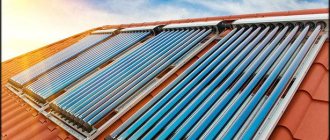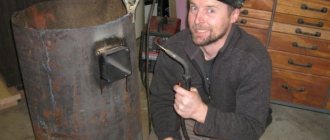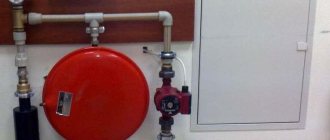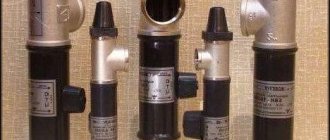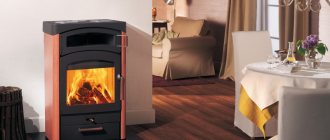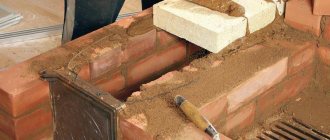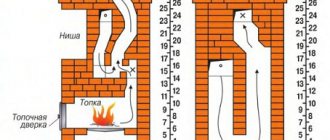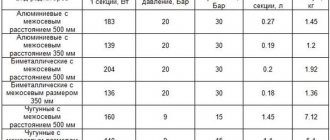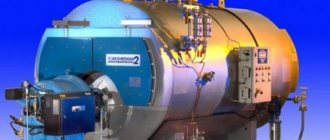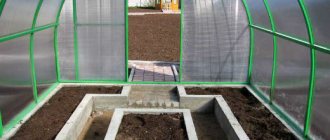An electrode (another name is ion) boiler is one of the variations of electric heating devices. It is used mainly in country houses and differs in that, instead of the usual heating elements, it is equipped with a set of electrodes, which, in fact, heat the working fluid. This innovation made it possible to get rid of the shortcomings characteristic of electrical equipment - low performance and short service life. Due to the simplicity of the design, you can make an electrode boiler with your own hands. But before you start assembling, you should familiarize yourself with the features of its operation.
DIY electrode boiler
Design features
From a structural point of view, such a boiler is a small all-metal pipe coated with polyamide (it acts as an insulator). The coolant input and output, as well as power terminals, are connected to the housing. A set of insulated electrodes is inserted into the pipe on one side, while the other is hermetically sealed.
Electrode boiler
Let's consider the technical parameters of factory models.
- Length – up to 60 cm, diameter – no more than 32 cm.
- The power can vary between 2 and 50 kW, in other words, the boilers are capable of heating a room of up to 1500 m².
- They can also be single- and three-phase. In the first case, we mean low-power appliances used in private homes, in the second - high-performance boilers intended for industrial facilities.
- The optimal value of energy consumption is achieved at a working fluid temperature of 75ᵒC. If the indicator is higher, then energy consumption increases, and if it is lower, then it, accordingly, decreases (at sub-zero temperatures, the thermal conductivity of the liquid worsens).
The operating principle of an electrode boiler. Comparison of electrode and heat boilers
Based on the method of coolant supply, ion devices can be of two types:
- open systems are characterized by the fact that the heated liquid moves naturally, transfers heat and is sent back to the heat generator;
- closed ones have a special pump and expansion tank - they are necessary for the initial stage of warming up the working fluid.
Boiler piping
Video - How the boiler works
DIY electrode boiler
As mentioned earlier, an ion water heater has a relatively simple design, so you can make it yourself. Is it worth doing this, because you can buy a ready-made model in the store, although you will overpay a little.
So, to make your own, you need to buy or find in the bins the following materials and tools:
- tee and coupling;
- insulating materials;
- terminals for connecting the boiler to the electrical network and grounding;
- one or more (optional) electrodes;
- large diameter steel pipe (for the device body);
- welding machine;
- a set of keys;
- gas key;
- valves, check and air valves, pressure gauge.
Take a large diameter pipe (about 100 mm) and preferably a length of 250 mm. Using a tee, you need to insert an electrode into it. Water will flow through the same tee. On the other side of the pipe, you need to install a coupling through which the already heated liquid will flow into the heating system.
IMPORTANT! The so-called zero coming from the socket must be installed on the pipe, and not the electrode. The phase is connected to the last one.
The process of assembling an electrode boiler is quite simple, the main thing is that the system is sealed and the electrode does not touch other metal parts.
When installing an electrode on a tee, install an insulator (for example, plastic) between them. Do not forget that the device must be sealed . If you want to connect a pipe and a tee with a threaded connection, you will have to order it from a turning workshop.
Weld a bolt onto the pipe and install a terminal on it to secure the future grounding. Install a coupling on top and weld a metal pipe (as mentioned earlier with a length of 1.2-1.5 meters), after which you can cover the entire structure with a decorative casing.
About the advantages
Electrode boiler ROMSTAR 2 smart (set)
- The main advantage of ion boilers is their high efficiency (up to 98%), which is explained by the relative simplicity of the device’s operation.
- Their small size allows them to be used even in small houses.
- Electrode boilers do not have a “dry run”. The liquid is a full-fledged “participant” in the working process, so its absence will not cause overheating of the system - only the circuit will open.
- Voltage drops in this case are not dangerous - if it drops, the device will not turn off, it will simply work with less power.
- Cost-effectiveness is another advantage of electrode boilers.
- Finally, they reach the set temperature quickly and cool down just as quickly, allowing for more efficient use of automatic control. Operating principle
Drawing of an ion electric boiler
Operating principle of an electrode boiler
As can be seen in the figure, when the polarity of the current changes, the direction of movement of salt ions in water also changes. In this case, the electrode and the device body are used as contacts.
The operating principle of such a device is based on the electrolysis process, that is, the role of the heating element is played by water itself . However, there is one condition: for water to begin to conduct current through itself, the presence of salts is necessary. The more impurities in a liquid, the better it will conduct current. Charged particles of impurities or ions under the influence of electricity begin to move from contact to contact (electrodes). Since the current in a conventional electrical network is variable and its frequency is 50 Hz, the ions change their direction from electrode to electrode 50 times per second.
The home network has a constant voltage of 220 V, hence, based on Ohm's law, as the resistance decreases, the current increases. But water is still not a good conductor, unlike metals such as aluminum or copper, so as the current increases, it begins to heat up. Thanks to this, the efficiency of electrode boilers is close to 100%.
IMPORTANT! The power of the water heater directly depends on the amount of impurities in the water. The more salts, the more powerful the boiler.
This simple diagram clearly shows the simplicity of the electrode boiler design.
As a rule, a standard boiler is cylindrical in shape. An electrode, also cylindrical in shape, is installed inside the latter. In this case, the first contact in the device is the electrode, and the second is the housing itself. Based on this, there is a need to ground the water heater, since current can flow through its body .
If you decide to buy an electrode heating boiler, the problem of grounding disappears. Most factory models have a body coated with polyamide. The latter plays the role of an insulator. Also pay attention to the size of the water heater. Usually this is a small cylinder with a height of up to 600 mm and a diameter of up to 300-400 mm. Such boilers can develop a power of up to 6 kW, which is quite enough to power the average house or apartment.
Manufacturing technology. Instructions
After becoming familiar with the structure of the boiler, you can try to make a similar device at home. This process is not as difficult as it may seem, but it requires utmost care and attention. Otherwise, the finished product may be unsafe.
Stage 1. Preparing everything you need
To work you will need the following equipment:
- welding machine;
- electrodes;
- iron tee;
- electrode insulation (polyamide);
- neutral wire;
- coupling;
- ground terminals;
- steel pipe of appropriate dimensions;
- insulation for terminals.
Note! At the preparatory stage, you should study the operating diagram of such equipment.
Stage 2. Assembling the ion boiler
Assembling the boiler
First, let's clarify several important aspects. So, the ion boiler needs grounding, as mentioned above, and the neutral cable must be supplied exclusively to the outer pipe. It is also worth remembering that the phase should only be supplied to the electrodes.
Assembling the boiler
With proper preparation, the assembly procedure should not cause any difficulties.
Assembling the boiler
Step 1. First, take a pre-prepared pipe (optimal dimensions - length 25 cm, diameter 8-10 cm). On one side, a set of electrodes is placed in the pipe, and on the other, a coupling is installed for connection to the heating main.
Ion boiler drawing
Note! To install the electrodes, a tee is required, through which the coolant will enter/exit.
Step 2. An insulator is installed near the electrode, which, in addition to its direct function, will also serve for additional tightness of the boiler.
Step 3. High quality heat-resistant plastic is used to make the insulator. But not only tightness is important for the device, but also the possibility of threaded connection of the electrode with a tee. That is why it is recommended to entrust the manufacture of the insulator to an experienced specialist who will make the part in accordance with the required dimensions.
Parts for boiler assembly
Step 4. A large bolt is welded to the body. Next, the neutral cable and grounding terminals are attached to the bolt.
Note! For greater reliability, you can attach a second bolt similar to the first.
Step 5. After connecting to the heating system (this is done using a coupling), all that remains is to hide the finished boiler with a decorative coating. Such a coating is necessary not so much for aesthetic purposes, but for safety and protection from electric shock. This should not be neglected, since it is necessary to limit access to the heat generator as much as possible.
Stage 3. Installation work
Boiler connection diagram
Boiler connection diagram
At this stage, installation of the following system elements is required:
- air vents;
- pressure gauge;
- fuse.
In this case, the shut-off valves are installed after the expansion tank. The above diagram will help you get acquainted with the connection features in more detail.
Installation of an electrode boiler
Installation of an electrode boiler
Connection diagram
Heating system assembly
Heating system assembly
Heating system assembly
Polyphosphate filter Setting up an electrode boiler
Video - DIY ion boiler
Other important installation points.
- The boiler is installed exclusively vertically, which can only be explained by its operating features. Fasteners must be separate.
- Before installing the device, the entire heating system is thoroughly washed. To do this, take clean water diluted with an appropriate product (such as Rothenberger). If a contaminated coolant is used or the line has not been properly flushed, the performance of the ion boiler will decrease significantly.
Flushing the system
Flushing agent - For grounding, you can only use a copper cable ø4 mm (or larger) with a resistance of no more than four ohms. The cable is connected to the zero terminal, which, accordingly, is located in the lower part of the unit body.
- Heating devices (batteries) are selected in accordance with the volume of the system. The best option is that a kilowatt of device power corresponds to 8 liters of total volume. If this figure is exceeded, the boiler will operate longer than required, resulting in increased energy costs.
- In addition, when arranging a heating system, preference should be given to bimetallic alloys or aluminum. The use of other alloys is unacceptable, since they contain many different impurities that affect the electrical conductivity of the working fluid.
- If an open system is installed, then the batteries used must in any case have a polymer coating on the inner surface, which will prevent air from entering and, as a result, prevent corrosion. Closed systems do not have this disadvantage.
- Cast iron products should be abandoned altogether, because the impurities they contain in large quantities will reduce the performance of the ion boiler. Also, such batteries are too large, which will increase energy consumption.
Installed boiler
Video - Connecting the Galagan boiler
Advantages and disadvantages of electrode heating boilers
We will compare electrode models only with other electric water heaters. Gas boilers will not be taken into account, which, of course, are much cheaper to operate, but require obtaining permits for their use, the availability of a project, gas and other special conditions.
So, ion boilers can stand out among their analogues in the following ways:
Electrode boilers are the smallest heating elements. Which does not affect their performance at all.
- they are compact, have a simple design, so they are well suited for use in dachas or private homes;
- the devices are not afraid of voltage surges, since the latter only affects the power of the boiler, but not its operation;
- ion water heaters quickly heat up and cool down, so it is convenient to use any automated room temperature control systems with them;
- they are safe, since even in the absence of water the device will not deteriorate, will not cause a fire or short circuit , it simply will not work (there will be no closed circuit);
- they have excellent efficiency, reaching 98%.
Disadvantages of electrode water heaters:
- knowledge in electrical engineering is needed not only to build a boiler, but also to calculate the parameters of the liquid, its electrical conductivity and the amount of impurities;
- Ordinary water, for example, from any heating system, is not suitable for operating the device, since such a liquid contains many free ions;
- air should not be allowed to enter the boiler, as this will accelerate the process of metal corrosion, thereby reducing the service life of the water heater;
- you need to monitor the temperature of the water in the boiler, since if it exceeds 75 degrees, this will significantly increase energy costs;
- when installing the device, it must be grounded, especially for homemade devices;
- The power of the water heater directly depends on the coolant ; high-quality and correctly made liquid can increase the power of the device and vice versa;
- they operate on AC power only.
You can use your electrode boiler as an instantaneous water heater by simply connecting it to the water supply system.
In addition, it is worth mentioning several features of the ion water heater:
- it can be used as a regular instantaneous water heater, and not just as a boiler;
- ease of assembly and installation, ease of repair have a positive effect on its popularity;
- very cheap, even if you buy a factory version rather than making it yourself;
- silent, has no impact on the environment or humans, does not emit toxins or harmful substances, so it can be installed anywhere.
No matter how good an ion boiler is, it is still not a worthy replacement for gas analogues. If it is possible to install gas equipment, of course, choose the latter.
About the coolant used
Electrode boilers do not require a specially prepared coolant; ordinary water can be used for this (provided that its resistivity does not exceed 1.3 kOhm/cm). In this regard, the water still needs some preparation. So, if you simply fill it with distilled water, it will not bring any success, because it does not conduct electricity.
The preparation process consists of conducting experiments, as a result of which the resistance increases (baking soda is used for this, for aluminum appliances - ASO-1) or decreases (melt or rainwater is added).
Prices for the range of electric boilers
Electric boiler
How to calculate power
The feasibility of installing a heating boiler of one type or another is determined by its operating conditions and the area of the room. Based on these data, the minimum power and operating cost for the heating season or the whole year are calculated.
Power formula: W=We*S (kW);
- W is the optimal power of the heating installation;
- We is the specific power per unit area, depends on the region (southern regions are about 0.05–0.07, northern and central – up to 0.2);
- S – total area (m2);
Additional correction factors can be introduced for different types of buildings and roofs:
- roof without thermal insulation – 0.25;
- no external wall insulation – 0.35;
- drafts or powerful ventilation – 0.15.
These and other amendments are contained in reference literature, as well as relevant GOSTs.
It is important! Having received the required boiler power value, compare it with the maximum possible load on the electrical network in the house. Garage and garden cooperatives have weak networks and are not able to power powerful heating devices.
Contents of delivery
The delivery set of the electrode boiler from the manufacturer includes:
- electrode block with power from 3-50 kW
- power unit including circuit breaker, modular contactor and digital water thermostat
- digital thermostat for air climate control unit.
Attachments (expansion tank and pump) are not included in the delivery package, so their parameters are pre-calculated and the equipment is purchased separately.
Popular models of electric boilers
| Boiler model | Peculiarities | Characteristics | Price, rubles | |||
| power, kWt | Dimensions, mm | Weight, kg | Heated area, m2 | |||
| Geyser-9* | Built-in temperature control sensor. Quick heating of the coolant (5-7 minutes). Degree of protection against moisture IP3. | 9 | 360x130 | 5 | 340 | 6 800 |
| Ochag-3* | Electronic digital temperature controller. Installed on the wall. Can be used even in winter. | 3 | 275x35 | 0,9 | 120 | 3 601 |
| Vulcan-25* | Freezing temperature -400 °C. Automatic temperature maintenance function throughout the day. | 25 | 460x130 | 5,7 | 350 | 7 000 |
| Galax-9 | Coolant flow monitoring system, safety valve. Three-stage power adjustment. Compatible with external indoor temperature control devices. | 9 | 600x450x200 | 26,5 | 100 | 27 000 |
| STELS-14L | Saving from 40 to 60% of electricity. Compatible with previously installed heating systems. | 13,5 | 540x440x105 | 16 | 150 | 18 250 |
* overall dimensions of these models are indicated in length*diameter units. The technical characteristics of the electric boiler of the Galan Vulcan-25 series allow it to be used in public premises without approval from the boiler inspection authorities.
Reviews from Galan product owners
“This year we decided to stay at the dacha until late autumn. When the temperature dropped to 12 °C, we started thinking about installing a heating device. The choice fell on Galan Ochag 3. The installation was entrusted to professionals. It works without interruption and heats the room quickly and evenly. The only drawback is that it can only function on water with the addition of an electrolyte.”
Mikhail, Volgograd.
“We purchased a 3 kW electric boiler as an addition to a gas boiler. My husband made the connection himself, using a parallel circuit. We have no complaints about the operation: when the gas boiler goes out, the electric one completely replaces it. It works on any type of coolant. It should be noted that upon purchase we were pleasantly surprised by the price of Galan with a power of 3 kW - 4,000 rubles.”
Maria, Saratov.
“After the construction of the cottage, the question arose about organizing heating. There was no access to the gas pipeline at that time, as a result of which it was necessary to heat the premises using an electric boiler. On the advice of a friend, I purchased a Galan Ochag-3 boiler, which is compact and economical. I was pleased with his work: the house became much more comfortable. I used salted water as a coolant.”
Sergey Grinev, Moscow.
Electric boiler installation
1. The device is grounded and its terminals are insulated. A 25 A current breaker is installed. A coarse filter is connected, after which the system is thoroughly washed with an inhibitor.
2. The Galan heating unit is installed in a vertical position, with the protective cap located at the bottom. It should be noted that it is prohibited to use cast iron radiators in conjunction with the boiler, since during operation they will be destroyed by electrolysis.
3. Connection to the network is carried out using stranded, tin-free wires made of copper. Their cross section is selected based on the current load on the system. There are 2 main schemes for connecting electric boilers:
- The general one is carried out in the following order: thermal electric boiler, heating unit with shut-off valve, temperature relay, expansion tank, drain valve, shut-off valve, circulation pump with filter.
- Parallel. In this case, the device will operate in conjunction with a gas heating device. The connection is made in the following order: solid fuel device, radiator block with shut-off valve, temperature relay with sensor, expansion tank, drain and shut-off valves, filter equipment, circulation pump, Galan electric unit.
Installation diagram
Selecting the main heat source to create an autonomous heat supply is a very responsible and scrupulous process. In conditions where there is no gas pipeline line near the house, one of the available energy supply options can be considered an electric heat source. An excellent solution to this issue would be electrical heating equipment from a domestic manufacturer, in the form of Galant electronic boilers. Their work is based on the physical principle of coolant ionization with further heat release due to the movement of split coolant ions between the electrodes.
- High level of quality.
- Compact overall dimensions.
- Reliable performance characteristics.
Necessary materials
To make an ion boiler we will definitely need:
- firmness and determination;
- welding, ability to use it;
- iron tee;
- a steel pipe that has the dimensions we need;
- coupling;
- terminal and electrode insulators;
- set of electrodes;
- terminals for grounding and zero.
You may also be interested in an article on how to make a steam generator yourself, read about it here
Heating system requirements
To ensure the normal functioning of the heating system, a number of requirements must be met:
- the proposed heating system should be a closed two-pipe type with a membrane expansion tank (volume characteristics 1/10L)
- the boiler is mounted vertically, not exceeding the level of the radiators
- When piping the boiler, it is recommended to observe the ratios of the diameters of the boiler block (Ø 32), riser Ø32 (1″/1/4), main line (Ø 25), radiator outlets (Ø 20).
For connection to the heating system, cast iron, aluminum and bimetallic types of radiators are recommended, as well as a register system in compliance with the standard configuration and coolant displacement.
